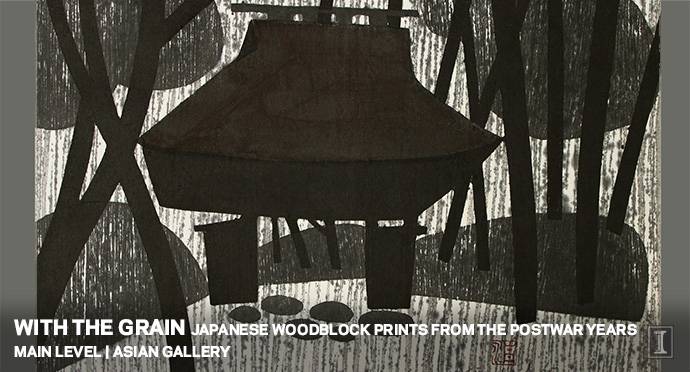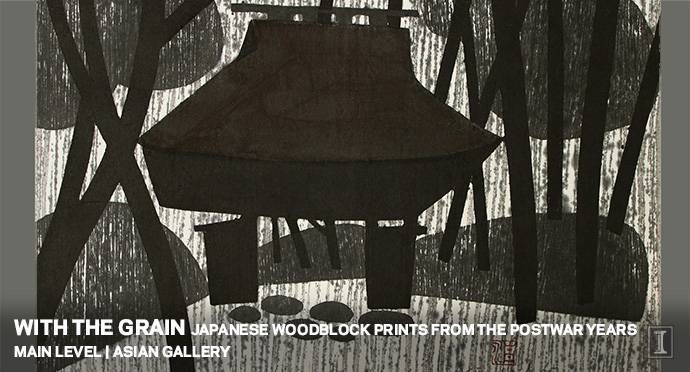
From August 29th through December 23rd, With the Grain: Japanese Woodblock Prints from the Postwar Years be on display at Krannert Art Museum.
Per the KAM website:
“Printmaking flourished in Japan during the Allied Occupation (1945–52), despite the devastation of the war, which had left its mark not only in the burnt ruins of Tokyo but also in the faces of a starving population. Woodblock prints—together with dolls, fans, silks, and sake cups—were sought after as souvenirs among the nearly half million American soldiers stationed in Occupied Japan in 1946. Collectors from the United States also scrambled for choice finds, following the example of late nineteenth-century aficionados of ukiyo-e (“pictures of the floating world”), which seemed to capture the allure of courtesans and actors who inhabited a strange and distant land.
“Modern Japanese woodblock prints, however, presented collectors with striking diversity. Shin hanga (“new prints”), established during the 1920s and 1930s, adhered to the old-fashioned idioms of ukiyo-e; they were also produced by commercial publishing houses. By contrast, artists such as Onchi Kōshirō advocated an entirely different way of making woodblock prints. Beginning in 1918, Onchi and his followers designed, carved, and printed their own images. Thus, their work came to be known as sōsaku hanga, “creative prints.” Herein lies the focus of this exhibition.
“Rather than use the woodblock to re-create aspects of a painting, sōsaku hanga printmakers called for the reinvention of the print medium. The marks of carving tools were left undisguised. Paper might be sized or left unsized to allow pigments to bleed into the fibers of the paper. Stray objects—leaves, fabric, pieces of string, planks of wood cut with the grain—were colored and pressed against paper to make tinted impressions of varied textures and shapes.
“This exhibition is presented as a two-part series. In part one, the work of sōsaku hanga printmakers will be juxtaposed with Edo-period ukiyo-e and shin hanga, as well as with the work of foreigners who studied printmaking in Japan during the postwar years. In part two, interpreters of the Creative Print Movement from the 1960s and 1970s will be compared with their predecessors.”
The exhibit is curated by Anne Burkus-Chasson and sponsored in part by Fred and Donna Giertz.








